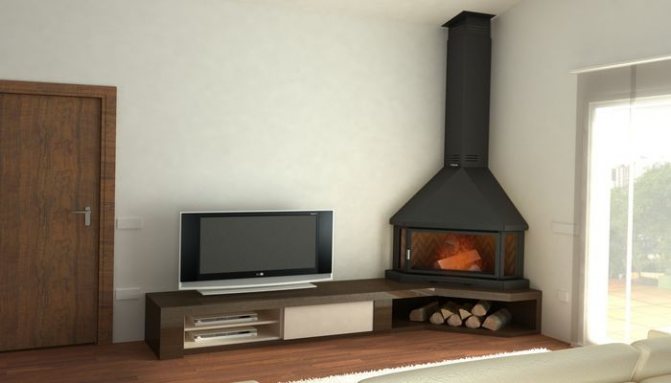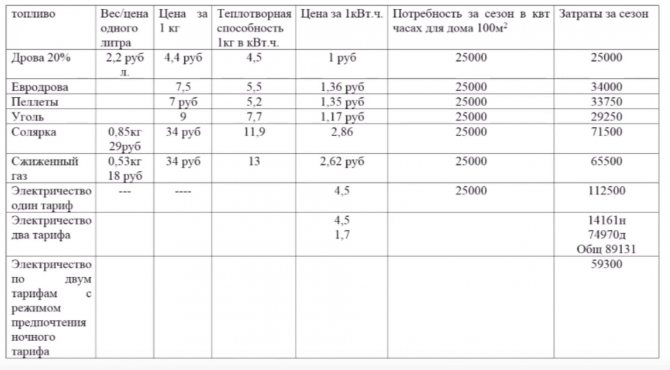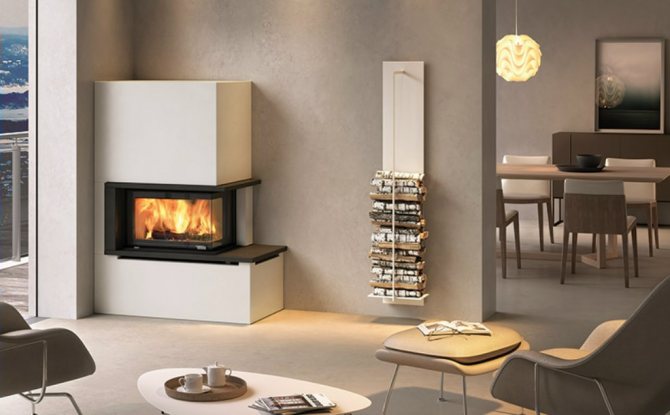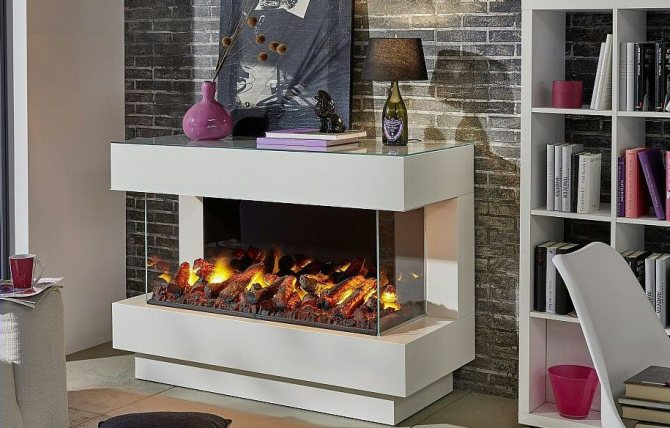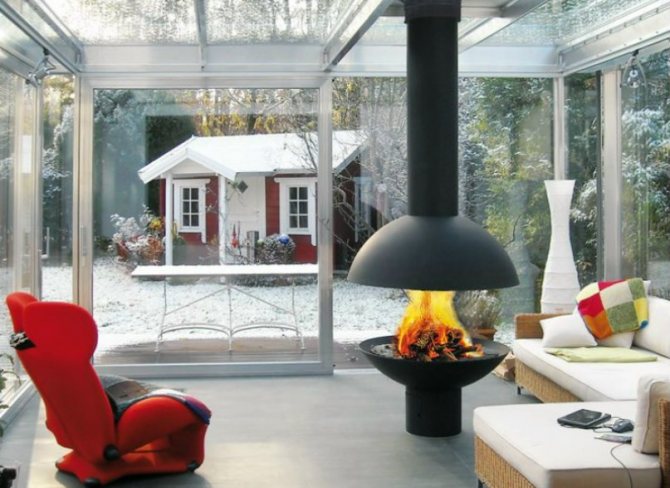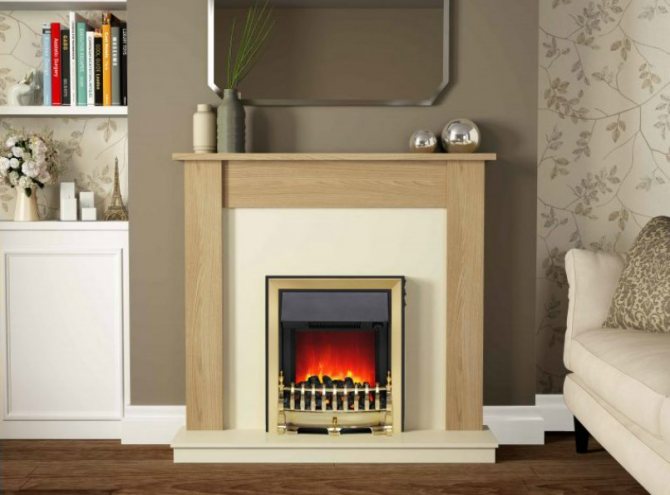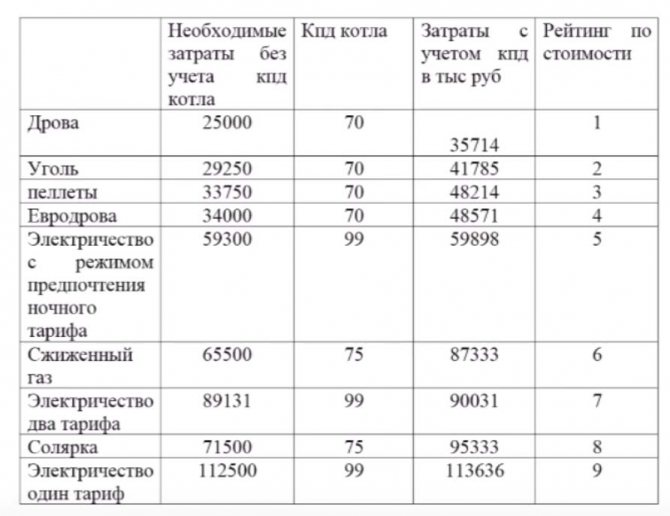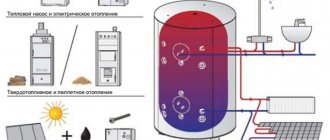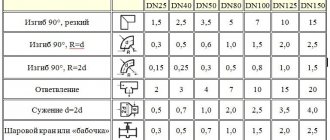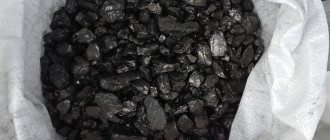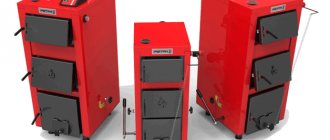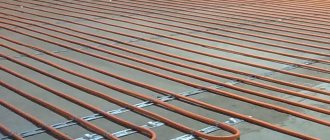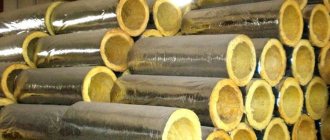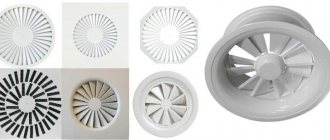As you know, the most efficient energy source for the heating system of a private house is mains natural gas. In addition, modern automated boiler equipment makes the use of gas simple and as safe as possible. But how to ensure cheap heating of the house if in the foreseeable future it is not possible to connect the house to the gas main?

The cheaper it is to heat a private house - we are looking for ways
Energy carrier selection principles
Economical heating of a private house is based on the cost and availability of the heat carrier. When choosing, one should be guided not only by the current situation (for example, the opportunity to get coal or diesel fuel at prices below the market average or receive free woodworking waste), but also sensibly assess the prospects.
If the house is without gas, you need to choose at least two alternative energy sources - for the main and backup heat source. This approach allows you to protect the house from serious problems associated not only with the low temperature in the living quarters, but also with the defrosting of the water heating system.
Before comparing the efficiency of energy carriers (excluding main gas), one should single out those types of fuel that are maximally available to the average consumer.
For example, a solar collector should be taken out of line, since it can be seriously considered only as an additional source of energy due to the fact that there are not many sunny days per year in the main territory of Russia, and besides, the equipment is not cheap.
Also, for now, let's leave the heat pump aside - it extracts free energy, but to get it, you need to use electricity. Plus, the system is difficult to install and requires serious costs for professional calculation and construction.
Thus, the list of available coolants is included
:
- liquefied gas in cylinders (installation of a gas tank requires a one-time investment of serious funds);
- diesel fuel (diesel fuel);
- electricity;
- ordinary firewood;
- coal;
- pellets;
- eurowood.
Attention! If there is access to such fuels as cheap peat briquettes, etc., their performance can be calculated for comparison using the method below.
Heaters ↑
A heating system is necessary if the house is lived all year round, and not only in the warm season or on short visits. In the latter version, it will be optimal to heat the house quickly for a while with a simple electric heater. They often stop at the oil cooler. Such a heater consumes little energy, while maintaining heat for a long time.
When there is really a need to warm up only one room, it is not necessary to warm up the whole house. A small room can be efficiently heated locally in a short time using an infrared heater, which is both economical and safe. For a summer residence, the option is quite optimal.
Fuel cost calculation
In order to decide how to heat your home cost-effectively, you need to calculate the consumption level of each available fuel.
Before proceeding with the calculations, it is important to understand the units of measurement of the amount of energy carrier and bring them into conformity, so as not to compare cubic meters with kilograms. In addition to electricity, all other fuels can be measured in kilograms.
Finding out the best way to heat a country house, it is useful to draw up the following table
:
| Energy carrier | Cost 1kg | Calorific value (kW / h for 1 kg of fuel) | Cost of 1 kW / h | The amount of heat required for a house with an area of 100 m2 for the heating season (kW / h) | Estimated costs per season | Boiler efficiency | Real costs per season |
| Propane | 13 | 21600 | 0.9 | ||||
| Diesel fuel | 11.9 | 21600 | 0.85 | ||||
| Firewood | 4.5 | 21600 | 0.75 | ||||
| Coal | 7.7 | 21600 | 0.75 | ||||
| Pellets | 5.2 | 21600 | 0.8 | ||||
| Eurodrova | 5.5 | 21600 | 0.75 | ||||
| Electricity (single rate scheme) | — | 21600 | 0.99 | ||||
| Electricity (multi-tariff scheme) | — | 21600 | 0.99 |
To choose the most economical heating of a private house, fill in the empty columns in the table.
This is done as follows
:
- Column 2. The cost of each energy carrier is entered, focusing on the current prices in the region of residence or the price at which you have the opportunity to get this fuel. Do not forget to convert units of measurement to kilograms (excluding electricity).
- Column 4. To calculate how much 1 kW of received heat energy will cost, it is necessary to divide the price of 1 kg of fuel by the specific calorific value (divide the value of column 2 by the value of column 3).
- Column 5. An approximate value is entered here (the length of the heating season is 180 days, the average heat consumption per hour is 5 kW for a house of 100 m2, hence 5 × 24 × 180 = 21600 kW / h). Replace it with a figure obtained from an accurate thermal calculation of your home.
- Column 6. Multiply the values in columns 4 and 5 to calculate the estimated cost per season.
- Column 8. Estimated costs must be divided by the efficiency factor of the boiler unit, since fuel consumption directly depends on the efficiency of the equipment.
So, by comparing the indicators in the last column, you can determine the cheaper it is to heat the house in your case.
However, when looking for the most economical way to provide warmth in your home, you need to take into account a number of other points so as not to be disappointed in your choice as a result.
Ease of use
The heating system must be not only efficient and economical, but also comfortable to operate. The less hassle it is, the better, since the effort to keep it functioning is an indirect heating cost.
The convenience of using the fuel that is selected to heat the house is assessed according to very specific criteria.
:
- the complexity of servicing the heat source, its maintainability;
- the need for fuel storage and what is required for this;
- convenience of everyday use (fuel supply, etc.).
Note! Evaluating fuel according to the above criteria should take into account the characteristics of boiler units, etc. For example, a long-burning coal-fired boiler is incomparably more convenient than a conventional brick solid-fuel furnace. That is, first decide on the type of heater that you can afford.
Service
:
- The undoubted leaders are electric boilers, They are durable, the maximum they may require is sometimes to clean the oxidized contacts.
- Propane gas boiler - the equipment is unpretentious, cleaning the igniter, burner, etc. it takes about once every two years.
- Pellet boiler. Several times a year you will have to clean the combustion chamber, once a year you will have to clean the chimney.
- Coal and wood-fired boilers, stoves - regularly require ash removal, but this indicator strongly depends on the design of the heater and can range from once a day to once every two months or more. May need frequent chimney cleaning.
- Diesel fuel boiler. Depends on the characteristics of the unit and the quality of the fuel - it can work, not inferior to a gas boiler, or it can constantly "be capricious", as a result of which it is necessary to systematically blow through the nozzles, etc.
Fuel storage
:
- Electricity does not require storage. However, in case of an emergency, it is recommended to have a diesel generator on the farm. And for this unit itself and the fuel for it, it is necessary to take a place.
- Heating in a private house with firewood, euro wood, pellets requires storage space, and in the case of fuel made from sawdust, this must necessarily be a dry, closed room. It is also recommended to store firewood protected from precipitation, since the higher the moisture content of the wood, the lower its heat transfer.
- Coal. Stored in a specially designated place, it gets very dirty and dusty, so it is not very convenient to use.
- Gas cylinders. They require storage in a separate building, fire safety measures must be taken. Preference should be given to an underground reservoir - a gasholder.
- Containers with diesel fuel. They are stored in a separate room in the boiler room, away from home, as the fuel has a strong unpleasant odor. However, today it is not uncommon for a tank with diesel fuel to be mounted underground, like a gas tank. This makes the system more convenient to use, but at a higher cost.
Ease of use
:
- It is most convenient to heat with electricity, since the heating equipment does not require any intervention.
- Pellet boilers are filled with fuel about once every two weeks or less often (depending on the volume of the bunker), with about the same frequency they change the cylinders when heating with liquefied gas. A long-burning coal boiler can also operate on one refueling for 1-2 weeks.
- The diesel boiler needs to be monitored regularly, especially if the fuel quality is poor.
- Solid fuel boilers require loading the firebox 1-3 times a day.
Give your own rating from 1 to 5 for each type of fuel (or heating unit) in all the above categories. And determine for yourself whether the most economical heating is always preferable to the more expensive but convenient one.
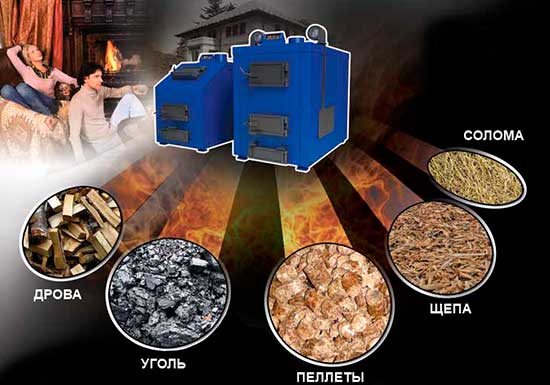

We figure out how to heat a country house (cottage) without gas
When choosing cheap heating of a private house, also pay attention to such a characteristic of the boiler unit as energy independence. If it is decided to provide heating of a private house without gas using an electric boiler, for example, a solid fuel non-volatile boiler or stove should become a duplicate heat source.
Firewood
By default, they are the cheapest type of fuel in almost any region. Even if you buy them ready-made - sawn and chopped. And if there is an opportunity to engage in their procurement on their own, then the price, as a selection criterion, can be generally neglected. Such fuel will cost you 4 times cheaper than the vaunted above natural gas.
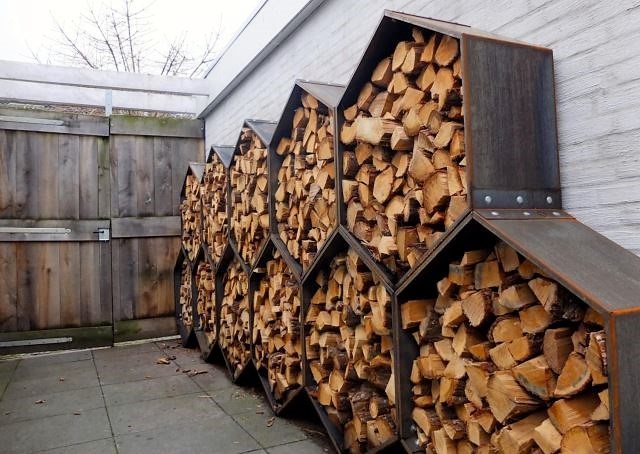

However, as you can see in practice, not everyone gives preference to this type of fuel, despite such attractive savings. There are several reasons for this.
Firstly, the efficiency of wood-fired boilers is not very high even for advanced models with pyrolysis and other innovations. Secondly, firewood ranks third from the bottom in the rating of fuel types in terms of convenience. They need to be stored somewhere, this time. Only dry firewood burns well and quickly heats up the premises, these are two. They need to be regularly dragged into the boiler room, these are three. The firewood itself will not be loaded into the boiler, you will have to do this yourself several times a day, that's four. Finally, the wood-fired boiler and its chimney system need regular maintenance. Especially if you are using wood that is not completely dry.
The conclusion is this. If you are not afraid of the difficulties associated with storing and using firewood, and you want economical heating, then this is your option. This is also your option if there is no natural gas nearby, or it is unrealistic to get sufficient power for your use.
Boiler unit to heat the house
When choosing the more profitable to heat the house, one should not forget about the costs of installing the heating unit.It is not always important how cheap an energy carrier is, as the equipment for using it (or generating it, if we are talking about solar energy, etc.) can be expensive. Let's give an approximate range of prices for heating equipment of different types in order to determine which one is more profitable to choose.
Brick oven with a stove. 20-100 tons and more, depending on the size, type, complexity of the structure, the presence of tiled cladding, etc. A well-made stove is ideal for a wooden house; it can last for several decades.
Oil-fired boiler. The cost of the unit is 25-180 tons. Many models are suitable if a house heated with diesel fuel is planned to be connected to the gas main - it is enough to replace the burner at the boiler and no new equipment will be required.
Solid fuel boilers. 20-400 tr. An inexpensive option will require frequent refueling. Long-burning boilers are included in the middle price category. Automated units require a large investment during the installation phase.
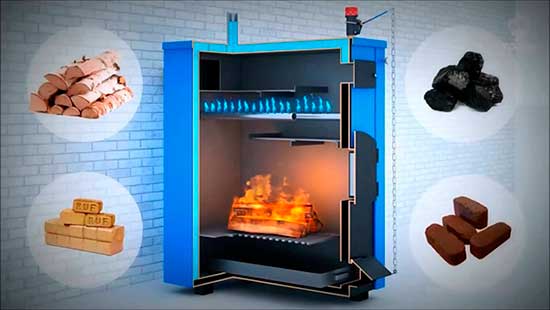

Choosing a boiler unit
Electric boilers. 15-100 tr. depending on the power of the model. If the region has a cheap night electricity tariff, it is possible to partially reduce heating costs by installing a heat accumulator complete with an electric boiler. In addition, when choosing what to heat the house with, if there is no gas, you can pay attention to other heat sources that run on electricity: infrared heaters, fan heaters, film underfloor heating, air heating system, etc.
Solar collectors. 15-60 tr. - the cost of flat devices, about 80 tr. - vacuum. The energy of the sun is inexhaustible, but even in areas with a large number of sunny days of the year, solar collectors serve only as an additional source of thermal energy for heating or preparing water in the DHW system.
Heat pumps. RUB 200-1500 depending on the complexity of the system. The heat pump takes heat energy from the environment. For its operation, starting energy is required, on average, to deliver 10 kW of thermal energy, it spends 3 kW of electricity - this is high efficiency. But the heat pump is also not universal, since it can operate stably only at an air temperature of at least -15 degrees, and completely loses its performance at -30 degrees. In temperate regions, a heat pump would provide the cheapest heating, if not for a serious initial investment.
Outcomes
Everyone chooses the most economical heating based on specific conditions, there is no universal advice on this matter. A good option is an electric boiler in combination with any other unit, primarily solid fuel. A heat accumulator, to which you can connect several different heat sources, including a solar collector, is a real opportunity to spend a minimum of money on heating.
In addition, one should not forget about high-quality insulation at home. It will be possible to save on fuel only if heat loss is minimized.
Related videos:
Stove heating at home
When building a house away from the gas line, you can install a wood heating system. With this option, it turns out to be more profitable to heat a country house. How does a wood stove work?
The principle of operation of this design is as follows: you buy a stove, put firewood in it and heat it. When wood is burned, the stove equipment heats up. It gives off its warmth, and the air in the house warms up.
With the simplicity of the design, this heating method has a number of advantages:
- there is a rapid heating of the furnace equipment;
- does not require the installation of radiators, pumps and pipes;
- reliability of the design allows using this furnace for a long time;
- buying firewood will not take a lot of money.
Currently, modern ones are not like the well-known old stoves.
The design and mechanism of the stove are designed so that the installation would give off a lot of heat and work for a long time from one wood load.
A boiler can be built into this system. When buying a boiler, it is better to choose a design pyrolysis type
... With such a boiler, heat will be generated due to the combustion of pyrolysis gases. This type of boiler equipment functions without the availability of electricity.
Below we will figure out how a solid fuel boiler works. At an increased temperature and in the complete absence of oxygen, the fuel decomposes into gas and solid waste. In this case, it is possible to get the maximum heat output from fuel combustion.
Now let's write about cons
this type of heating:
- all furnace installations are large, so you have to think carefully about where to put it; the weight of the stove is large enough, therefore, it will not be possible to mount the stove on its own;
- you will need an additional covered storage room for firewood. It is very important that there is enough firewood for the entire heating period;
- with improper use of furnace equipment, the products of its combustion can be dangerous to humans;
- it is necessary to equip the chimney;
- with large areas of the house, the stove will not heat the rooms evenly.
Which heating is more profitable?
Heating a house depends not only on the power generating heat from the installation, but also on a number of other factors:
- material and wall thickness;
- thermal insulation of the ceiling, floors and roof;
- the quality of insulation of the facade, floor, walls from the inside;
- the size of the building;
- the number of windows, doors and their energy efficiency;
- availability and design of ventilation.
When the causes of heat loss have been eliminated as much as possible, you should proceed to the calculation and selection of equipment.
The required parameters can be achieved using:
- electric, liquid, solid fuel, gas, hybrid boilers;
- centralized boiler rooms;
- electric heaters;
- alternative systems.


Gas systems
The most economical heating in the presence of a nearby main pipeline is gas.
Blue fuel suppliers increase the price for it annually, as well as the cost of connection. But the same happens with other types of energy carriers.
Therefore, if funds are available to pay for the installation, it is better to do this, since gas systems:
- easy to operate;
- have good efficiency;
- have a relatively low cost;
- serve for a long time;
- safe from the point of view of ecology.
When choosing equipment for gas heating of a country house, options are offered for any budget.
Heat costs will increase if liquefied gas is used instead of the main one. It will be necessary to monitor the pressure in the cylinders, and change them regularly. In addition, the cost of liquefied fuel is higher than that of natural gas.
Gas boilers are not without drawbacks:
- It is necessary to coordinate the connection with the gas supply organization. Required: a project, installation work under an agreement with a licensed enterprise, an agreement for post-warranty and warranty maintenance of the boiler.
- The house needs to make a chimney.
- If liquefied gas is used, then a separate room will be required, at least the size established by the standard.
- Economical and easy-to-use equipment contains electronics, which means that it is volatile, i.e. will not work when the power is cut off.
- The entire system is fire and explosive.
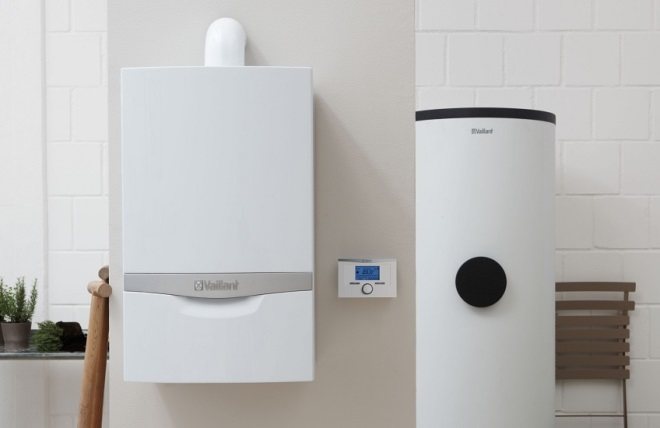

Solid fuel systems
Efficient heating can be done with solid fuels: coal, wood, pellets (granules), briquettes.
You will need to install a boiler, piping, radiators and, if necessary, a heat storage tank.
The briquettes use a natural polymer lignin to bind compressed wood waste (wood chips and shavings), agricultural waste (buckwheat husks and sunflower seeds, straw). Briquettes are also made from peat.
Cylindrical pellets from raw materials pressed under high pressure: rejection of flax, straw, sunflower, wood chips, sawdust, bark, used containers and packaging materials. Pellets are safe, easy to store, relatively inexpensive biofuel.
The quality of coal depends on the type: anthracite, stone, brown. Anthracite has a higher degree of coalification - it burns with less intensity, but with a higher heat and flash point. The process of heating with coal in a private house must be constantly monitored, since if there is a lack of air, attenuation is possible, and in excess, the boiler burns out and overruns (removal) of fuel.
Liquid heating systems
Equipment for heating a private house can run on fuel in liquid form:
- diesel fuel;
- kerosene;
- oil processing;
- fuel oil.
Fuel oil for use in furnace systems is obtained after high-temperature treatment of intermediate fractions during oil distillation or by direct route. The disadvantage of this type of fuel is that it contains sulfur, which, when burned, forms sulfur dioxide.
Oil mining can be obtained free of charge. But for her it is required to independently remake the standard equipment, since special equipment is not produced. In addition, oil fuel contains antifreeze, metals from the production of engine parts.
Kerosene is difficult to transport and store, smokes heavily when burning, but burns well. It is produced by petroleum rectification and is safer than gasoline.
There is a wide range of equipment for diesel fuel, the efficiency of which is slightly less than that of gas. Diesel fuel is safer than liquefied gas; therefore, supervisory authorities are less demanding on the conditions for placing the boiler.
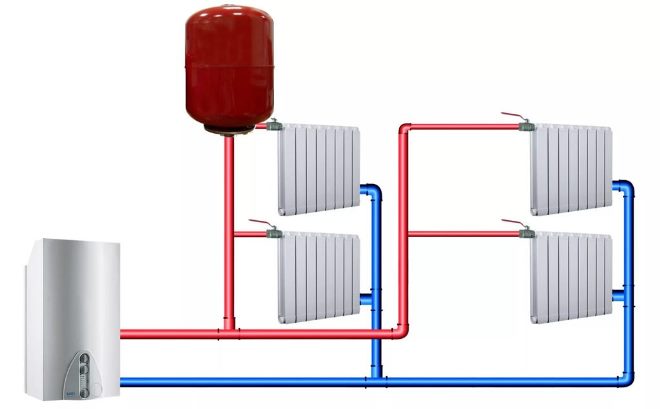

Electric heating systems
Electric heating of a country house - options that can be used:
- Infrared heaters. Radiation from electrical appliances heats objects in the room.
- Convectors. They take cold air from the floor, let it pass through themselves and heat it.
- Warm floor. Placed under the flooring in the form of heating cables or mats.
- Electric boilers. There are induction, heating elements or electrode. The highest efficiency for induction installations.
Electric system - heating without fuel, which does not need to be stored, monitored, and regularly purchased.
Other methods of heat generation using electricity can be air conditioners, oil radiators, fan heaters, reflectors.
Hybrid systems
A universal, relatively cheap heating of a private house with your own hands can be assembled on the basis of a hybrid boiler, which can work on:
- gas and electricity;
- gas and wood;
- wood and electricity.
The equipment is made with combined combustion chambers or separate ones.
There are also hybrid installations that connect different types of heating systems, such as a heat pump and a boiler. The condenser and evaporator act as a heat exchanger. The device contains a geothermal circuit placed in the ground. The backup system is a solid fuel or electric boiler.
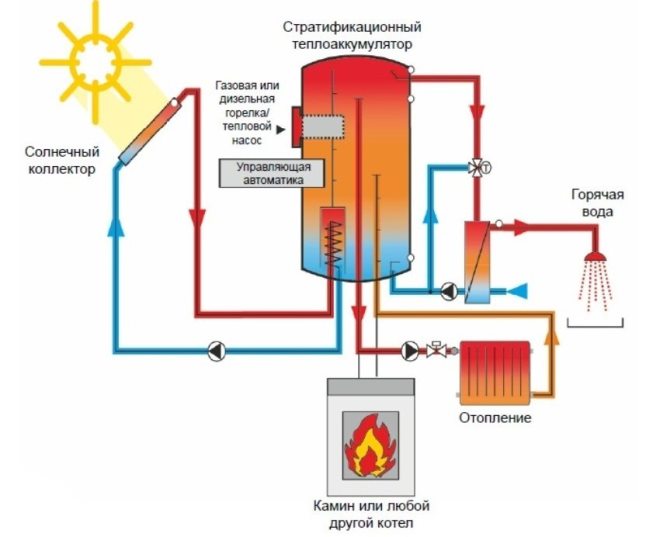

Solar collectors
Once a solar system is assembled and installed, it is inexpensive to operate as the resources it uses are renewed by nature.
Solar installations are used so far as additional ones together with one of the standard heating methods. They pay off within 3-5 years.
Collectors are produced in the following types:
- Vacuum - assembled from many tubes, most often copper, which in turn are located in glass flasks, together with reflective and absorbing substances.
- Flat with light absorption - heat-insulated aluminum box with copper tubes covered with tempered glass. Lowest cost of solar installations.
- Air - works according to the "greenhouse effect" scheme.
Simplified ranking of the fuels presented
In conclusion, we present the promised rating of the considered fuels, summed up by a combination of a number of factors. This distribution is true in most cases, but not in all. If you have all the indicated types of fuel available, the price for them is adequate (and not intentionally overstated), the economic component and convenience are important for you, then you can safely use this rating when choosing:
- Natural gas.
- Electricity (with a preference for the night rate and a heating medium storage).
- Firewood.
- Electricity (if just double tariff).
- Pellets.
- Coal.
- Eurodrova.
Let's remind that this rating is built not only taking into account the cost of fuel. It takes into account such criteria as convenience, efficiency of boilers, frequency of their maintenance, price of 1 kW * h, environmental friendliness and others. We also recall that this list is not the only fair for everyone, since depending on the region, the price tag of fuel and its availability in fact differs significantly.

